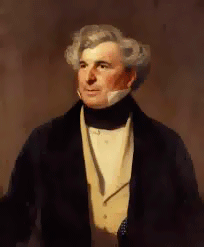News about maps
Digital cartography and GPS navigation
Mapstor news
This Day in History
Travelling with mapstor.com
This Day in History
4th December, 1674 Marquette founded the first European settlement
19th November, 1875 was born Hiram Bingham
18th November, 1832 was born Nils Adolf Erik Nordenskiöld
14th November, 1963 the island Surtsey was founded
11th November, 1729 was born Louis Antoine comte de Bougainville
15th April, 1800 was born James Clark Ross
 On the 15th of April, 1800 in London was born James Clark Ross - English explorer, navigator, a member of the Royal Geographical Society.
On the 15th of April, 1800 in London was born James Clark Ross - English explorer, navigator, a member of the Royal Geographical Society.
James Ross came to the fleet at the age of 12, when sailed on his uncle’s ship. 6 years later he took part in the expedition of John Ross in the Arctic region of Baffin Island. Geographic map shows that it is the fifth largest in the world (with total square more than 507 000 sq.km) and the largest island in Canada, but because of the harsh climate the population is less than 12 000 inhabitants.
In the 1820s, James Ross participated in three expeditions led by William Edward Parry who aimed to search a Northwest route from the Atlantic to the Pacific. In the period from 1829 to 1833 James Ross continues to study the Arctic regions under the leadership of John Ross. In 1831 they managed to open the North Magnetic Pole - the point where the magnetic needle on the compass takes a vertical position, that is inclined at an angle of 90°. And in 1841 James Ross managed to determine the exact coordinates of the South Magnetic Pole.
In the years 1839-1843 James Ross had at the disposal ships "Terror" and "Erebus" and led an expedition to Antarctica, during which discovered and mapped the greatest ice shelf and sea, later named in his honor. Topographic map shows the location of the Ross Sea in the Pacific sector of the Southern Ocean off the coast of Marie Byrd Land and Victoria. Ross Ice Shelf extends from west to east for 800 km, and from north to south - for 850km, with an area equal to 487 000 sq.km, which is comparable to the size of France.
Modern topographic map of Antarctica shows volcanoes - acting Erebus and extinct Terror, which were opened in 1841 by James Ross and named in honor of his ships.
In 1842 James Ross became the first person who managed to cross the mark of 78° south latitude.
On his return from a voyage James Ross was awarded the highest honors. In 1847 Ross published a book in which he described his researches.This Day in History 15-04-2014



